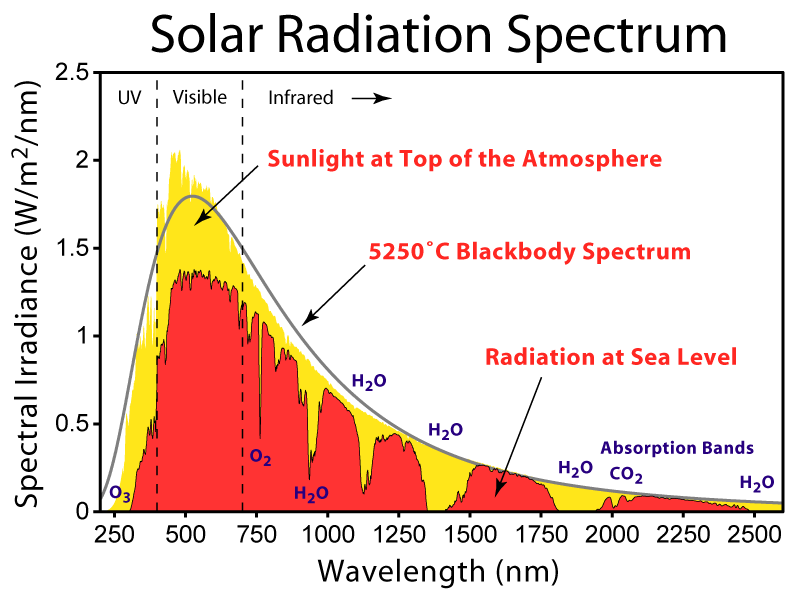
[1] This chart shows the spectral distributions of cold cathode fluorescent (CCFL), compact fluorescent (CFL), and light-emitting diode (LED) lights.
Plant
While investigating possible parts to apply to our project, we realized that the registry had few characterized cyanobacterial parts, more specifically promoters. Therefore, we set out to expand the selection by adding and characterizing several novel promoters specifically for our chassis organism Synechococcus elongatus PCC 7942. The promoters we chose to characterize include strong constitutive as well as light- and nutrient-dependent promoters.
The constitutive promoters we characterized are cpc from our chassis organism and cpc-560 from a close relative, Synechocystis sp. PCC 6803. The light-dependent promoter is psbA2, a high-light inducible promoter, and makes toggling genetic circuits on and off easier. The nutrient-dependent promoter is idiA, a ferrous-ion repressible promoter. Since cyanobacteria consume ferrous ions as a nutrient, idiA allows for automatic activation of genetic circuits once a certain culture density is reached. By adjusting the initial concentration of ferrous ions, the timing of activation is tuned.
These promoters should make working with cyanobacterial genetic circuits easier and open new possibilities for synthetic biology. For more information, check out our Basic Parts page!

[1] This chart shows the spectral distributions of cold cathode fluorescent (CCFL), compact fluorescent (CFL), and light-emitting diode (LED) lights.

[2]Solar spectrum and atmospheric absorbing gases.